The 10 Best Safari Cameras and Lenses

What are the best safari cameras? It’s likely one of the first questions every traveler coming to Africa asks after booking a safari. Having a decent camera for safari is at the top of our recommendation list. While it’s not necessary, and we’re big believers in putting the camera down and saving some photos in your memory, there is a thrill in grabbing that perfect safari photo.
It’s also a sure way to share your wildlife experiences with friends and family back home. There are several aspects to consider when looking for the best safari camera. This post is not meant for professional photographers. If you’re likely at that level, you know what the perfect safari camera is for you.
Best Safari Cameras

Canon R5

Mirrorless | 45MP Sensor | MSRP: $3,899
Pros
- Superb Image Quality
- Excellent Color Rendition
- Leading Class Auto-Focus
- 45MP Sensor
- Canon Color Quality
Cons
- High Price
- Expensive Lenses
The Canon R5 is the flagship model of Canon’s mirrorless line, and they back it up with an impressive range of lenses ready to capture wildlife. It’s excellent for everyone, from professionals to hobbyists seeking a premier camera. The robust camera can handle a wide range of photography, from wildlife to landscapes and portraits.
A full-frame mirrorless sensor inside the weather-resistant body delivers 45MP images and 8K video. The body follows Canon’s previous 5D line, a proven formula that feels great in your hands. With a robust grip and a rugged body, it feels adept at tackling adverse weather conditions such as dust while on safari.
It’s easy to miss the shot on safari and the Dual Pixel II AF system with human and animal detection trained by machine learning. It’s an impressive system that feels very adept when shooting lions in the bush. There isn’t much to complain about the Canon R5 besides the high price tag. The price point is limited to prosumers and hobbyists ready to invest in the Canon line.
Shop For Canon R5
2.) Sony RX10 IV
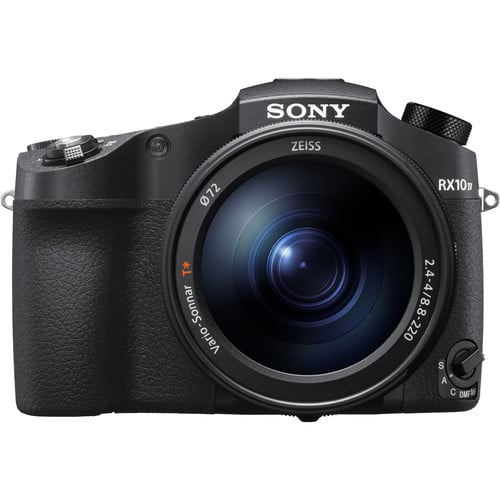
Bridge Camera | 20MP | 1″ Sensor | | MSRP: $1,698
Pros
- Good Image Quality
- Great Value
- Impressive Zoom Lens
- Phase Detect Auto Focus
Cons
- No Room For Growth As A Photographer
- Expensive Bridge Camera
The Sony RX10 IV is a bridge camera. It fills the gap between old-school point-and-shoot cameras and interchangeable lens systems. A bridge camera with a fixed lens offers shooters a versatile zoom lens. It provides the simplicity of point and shoots with superior image quality.
Theb Sony RX10 IV is an excellent superzoom bridge camera with a 24-600mm 2.4-4 zooms lens. It’s backed up with a 20MP 1″ stacked BSI-CMOS sensor. It allows for phase-detect autofocus for depth awareness, which is essential when focusing at long focal lengths. It will find the focus faster and can shoot 24 frames per second with auto exposure. It can also shoot a respectable 4K video that should impress most hobbyists.
If you’re looking for a straightforward camera that will be easy to use as a photographer, this camera is a great pick. The camera is an exceptional pick for safari-goers who want high-quality images without extensive knowledge of photography or the need for individual lenses. The downsides to the camera include the price point and lack of much for progression as a photographer.
Shop For Sony RX10 IV
3.) FUJIFILM X-T5

Mirrorless | 40 MP | APS-C Sensor | $2,099
Pros
- Excellent Image Quality
- Superb Build Quality
- Fuji X Mount Lens Selection
- Image Stabilization
- Fantastic Video
- Large Battery
Cons
- APS-C Camera
- There Is Better Autofocus
For a safari camera that looks as good as the images it captures, the Fuji X-T5 is an easy choice. The build quality on this mirrorless camera is excellent, with reliable weatherproofing and retro dials that make manual shooting intuitive. It is easily the best ASP-C camera on the market and gives a run at some of the full-frame cameras in function.
The Fuji X-T4 has a superb autofocus function and image capture due to its cutting-edge 40MP APS-C X-Trans CMOS sensor. It can shoot up to 30 frames per second with its electrotonic shutter and 15 fps with the mechanical. Video is where the camera shines, as the stabilization is excellent. It can shoot video in 12-bit color and the modern codec of H.265.
In form, the camera feels great in hand and features dual card slots, a rotating screen, and multiple dials. The EVF is brilliantly bright, and the rear LCD looks sharp. APS-C cameras are great for travel as they utilize more compact lenses. Fuji delivers an excellent line of razor-sharp lenses for an affordable price compared to full-frame lenses.
The camera is a great stills camera and an excellent video camera, but even better at switching back is forth between the two formats. This is a great safari camera to shoot videos and stills. The Fuji X-T5 is the camera we use for work as professional writers and content creators.
Shop For Fujifilm X-T5
4.) Canon 90D

DSLR | 32.5 MP | APS-C Sensor | MSRP $1,199
Pros
- Excellent Image Quality
- Superb Build Quality
- Fuji X Mount Lens Selection
- Image Stabilization
- Fantastic Video
- Large Battery
Cons
- APS-C Camera
- There Is Better Autofocus
The Canon 90D, despite some age, makes for a great safari camera. The camera has many solid suits for an exceptional safari camera. It’s weatherproof, meaning those dusty roads and African thunderstorms won’t take your camera by surprise.
It has a cropped sensor that shoots a whopping 32.5 MP image with a high dynamic range. The cropped sensor gives a greater focal length, combined with the high processing power of the latest Canon cameras, which means it shoots rock star photos. Also, an EF mount Canon has a massive selection of lenses to put on the camera with a vast selection of quality and price points.
The camera has a WiFi connection so users can pair and remotely shoot with their phones. A sweet flip screen great for low-angle ground shots and shooting video. The touchscreen LCD makes live 4K video focusing and tracking a breeze. So, it’s arguably one of the best cameras for safari on the market and particularly well-loved by birders!
Shop For Canon 90D
5.) Sony Rx100 III-VII

Mirrorless Point and Shoot | 20.1 MP | 24-70mm Zoom | MSRP $299+
Pros
- Compact Design
- Great Image Quality
- Stabilized 4K Video
- Fast Lens
- Image Stabilization
Cons
- Limited To One Lens
- Battery
Despite its compact size, the Sony RX100 is well known for packing a punch. The camera has many models that vary by price and features. The models offer a one-inch sensor and a solid lens for excellent image quality. It’s an impressive camera that can shoot 24 images per second and a lovely 4K video.
A built-in lens at a 2.8 aperture allows the camera to handle low light and produce a shallow depth of field for professional-looking photos. Hand-held video and shots are smooth, thanks to the sensor stabilization. Although its point-and-shoot nature, users have complete manual control with the ability to shoot RAW images.
The negatives are the size of the camera makes it uncomfortable for shooting all day, okay at landscapes, and it has a small viewfinder and one lens. I find the viewfinder challenging to use in harsh lighting conditions, tough to operate for a full day, and annoying with the lack of a spare battery. If you’re an aspiring photographer, it leaves a lot to desire in image manipulation with new lenses. It also doesn’t have the best zoom at 70mm; I prefer a longer lens when taking safari photos.
However, it’s an excellent travel camera for most as you don’t need many accessories, just a memory card with a lightweight tripod. It fits in a pocket, and you can easily take it to sensitive areas. Its compact size is desirable for hikers, minimalists, or anyone who doesn’t want a dedicated camera bag.
Shop For RX100
6.) Canon EOS M50 II

Compact Mirrorless | 24 MP | APS-C Sensor | $699
Pros
- Excellent Auto Features
- Great Images
- Value
- Dual Pixel Autofocus
- Build Quality
Cons
- APS-C Camera
- Limited Lens Selection
- Video Footage Is Okay
- Limited Battery Life
The EOS M50 Mark II is an excellent compact mirrorless camera with an impressive 24MP APS-C sensor that utilizes Canon’s Dual Pixel autofocus. Despite its small size, the camera feels comfortable in the hands and offers a good EVF/rear screen display. The appeal of the M50 is the beautiful auto mode that can help novice photographers produce impressive images.
Settings are easy to adjust, yet it’s feature-rich enough to grow with the camera experience. It also features a nifty Bluetooth/WiFi connection that works reliably. Autofocus on the camera is reliable, and Canon’s Dual Pixel AF system quickly finds its subject. Its images are sharp and deliver the color quality we expect from Canon.
It has a few negatives. Most notable is the limited lens selection with the mount and lackluster video. It’s a poor choice if you like to shoot many videos, but it does shoot beautiful images in its well-designed body. It also has a well-priced kit with 15-45mm and 55-200mm lenses.
Shop For Canon EOS M50 II
7.) Nikon Z5

Mirrorless | 24 MP | Full Frame Sensor | MSRP $1296
Pros
- Affordable Full Frame Camera
- Excellent Image Quality
- Superb Build Quality
- Image Stabilization
Cons
- 1.7x Crop On 4K Video
- ISO Noise Reduction
- Only 24 MP
Nikon’s Z5 mirrorless camera is one of the most affordable full-frame cameras ever. It features an in-body stabilized 24MP CMOS chip with phase detection autofocus. Those impressive specs are inside a robust, weather-resistant camera body. Nikon has been building an amazing camera body for decades, and this is what we have come to expect from the camera behemoth.
The camera function is good, with two control dials, a tilting touchscreen, an AF joystick, and a high-resolution EVF. It’s comfortable to handle, and the two control dials are customizable. Autofocus performance is terrific, as is the autofocus subject tracking. Battery life is decent, with the average charge lasting just under 500-400 shots.
Image quality is the real stand out with the Z5 as it has excellent ISO performance, color rendition, and dynamic ranges. The camera crops the image 1.7x down when in 4K mode, so getting a wide angle or gauging the correct lens is challenging. It’s also only 24MP for a full-frame camera. Regardless, it’s a capable still camera that is excellent for those looking to up their photography.
Shop For Nikon Z5
8.) Panasonic Lumix DC-FZ1000 II

Mirrorless | Bridge Camera | 20.1MP 1″ MOS Sensor | MSRP $897
Pros
- Simple Design
- Decent Image Quality
- Articulating Touch Screen
- Responsive AF Screen
Cons
- Bridge Camera Limitations
- Plastic Construction
- Crop In 4K Video
The Panasonic Lumix DC-FZ1000 II is a bridge camera. It fills the gap between old-school point-and-shoot cameras and interchangeable-lens cameras. A bridge camera has a fixed lens with optical and digital zoom. It offers the simplicity of point and shoots with superior image quality. For the price point, it’s a rugged camera to compare due to its lens range! You can buy better cameras, but they won’t have an equivalent lens.
The advantages of this camera include a larger sensor than most bridge cameras, and it shoots 4k video. While the lens is not interchangeable, it ranges from 25mm to 400mm. The sensor is more significant than most competitors at almost 1″, which means it is one of the best in a bridge camera. The camera body is a nice build and will feel natural in your hands.
If you’re looking for a straightforward camera that will be easy to use as a novice photographer, this camera is a great pick. The camera is an exceptional pick for safari-goers who want high-quality images without extensive knowledge of photography or the need for individual lenses. The current price point offers a ton of value if you want the latest and greatest try-out, the Sony Cyber-shot DSC-RX10 IV, for a top-of-the-line bridge camera.
Shop For Panasonic Lumix DC-FZ1000 II
9.) Canon 1dx MkIII
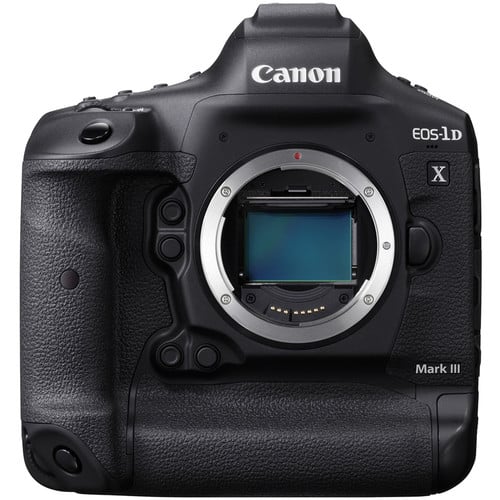
DSLR | 20.1MP Full-Frame CMOS Sensor | MSRP $6,500
Pros
- Exceptional Image Quality
- Excellent Function
- Professional Level Camera
- Great Form and Function
- Weatherproof
Cons
- Expensive
- Lacks Megapixels
The Canon 1D X MkIII is the flagship DSLR of Canon, and it’s a mighty camera. Simply put, the camera is the toughest, fastest, most versatile, and greatest image-quality camera ever made. The full-frame camera is capable of shooting RAW images at 20 fps a second. If you want to know what the guys from National Geographic are carrying, it’s the Canon 1D X MkIII.
The rear LCD is super bright so you can view photos in the hot African sun. Plus, the screen features a beautiful touchscreen for adjusting settings, adjusting the focus on video, and swiping through your pictures. Speaking of the video, the 1D X Mkii can shoot 5.5k Raw at 60fps and 1080 at 120fps. That way, you can catch high-definition images in super-smooth slow motion.
One negative to Canon’s flagship camera is the high price tag of over $6,500 for the camera body. So, when you add in the cost of lenses, you’re looking at a hefty investment. However, you get a safari camera prepared to handle the bush and produce professional-quality images for the price.
Shop For Canon 1DX MKIII
10.) Panasonic DC-ZS200
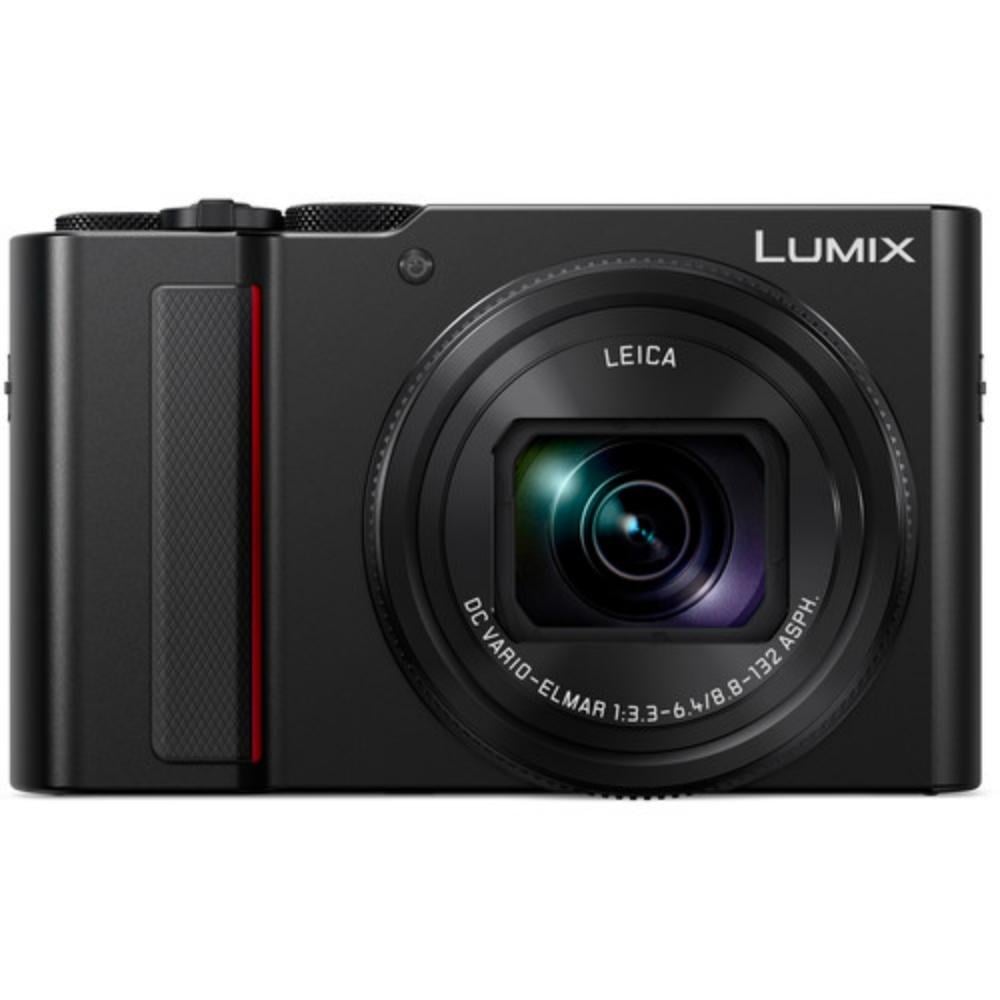
Mirrorless Point and Shoot | 20.1 MP | 24-360mm Zoom | MSRP $697
Pros
- Zoom To Size
- Built-in EVF
- Image Quality
- 4K Video Recording
Cons
- Long Zoom Lens Sacrifices Some Image Quality/Sharpness
The Lumix LX DC-ZS200 is a compact point-and-shoot camera that can satisfy even the most experienced photographer’s expectations with its 20.1 MP 1″ sensor. It fully uses the little Leica zoom lens that can reach up to 15x for a range of 24 to 360mm.
The TZ200 is so versatile that its interface is simple enough for novice photographers but offers sophisticated manual settings that allow experts limitless creative control. Its lens has an aperture equivalent of 1.7-2.8, perfect for macro photography and low-light shooting. On top of everything else, the TZ200 also shoots in 4K ultra-high definition.
One would think the TZ200 would also include a tilting touchscreen for so many advanced functions, which is pretty standard with most newer cameras on the market today. If dependent on the EVF (electronic viewfinder), be prepared for the battery to drain quickly. Most impressive is the weight to the performance of this camera, as it weighs only 340g and can hold its own against larger format cameras.
Shop For Panasonic DC-ZS200
quick Table Of The Best Safari Cameras
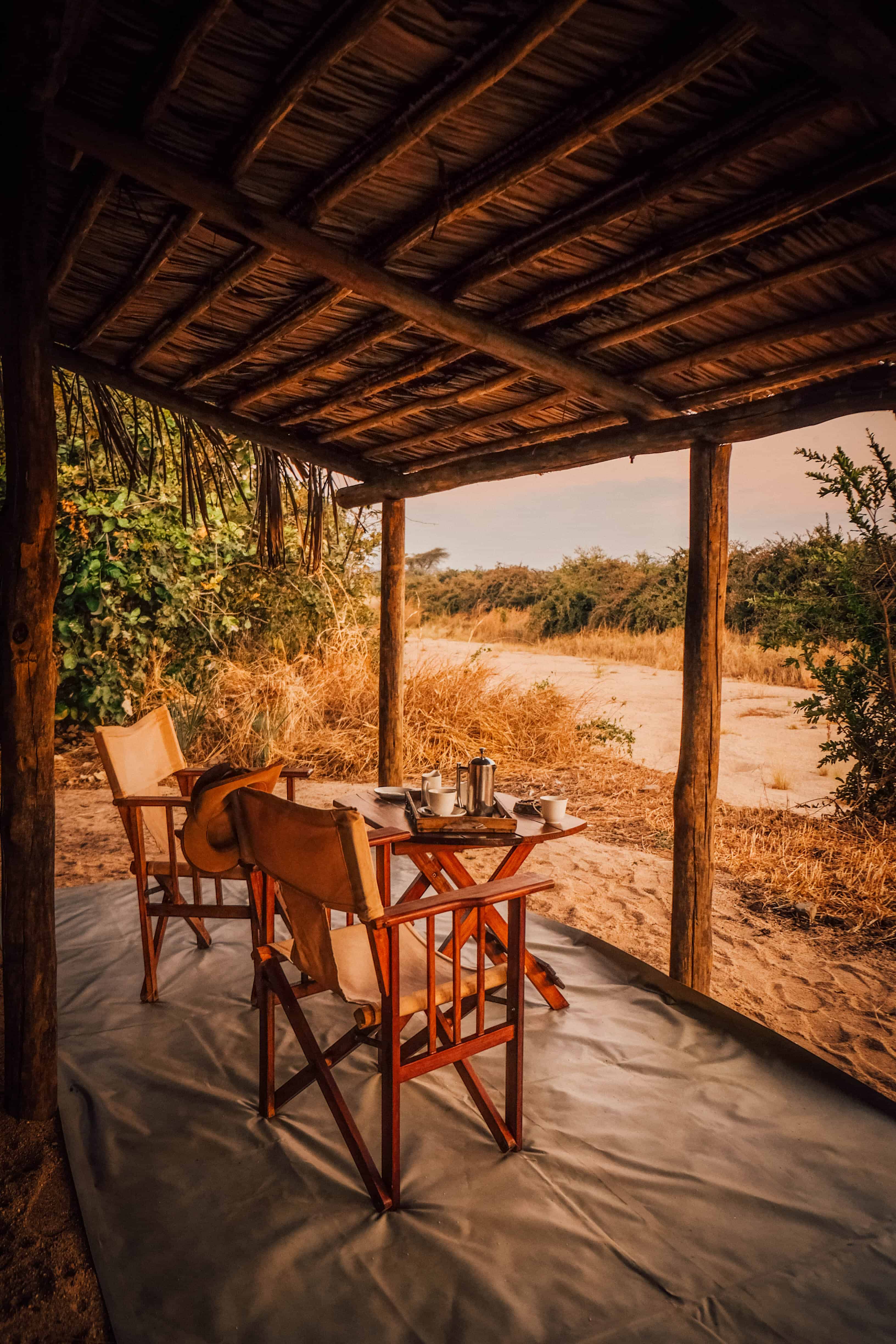
| Camera | Details | Shop |
|---|---|---|
Canon R5 | • Mirrorless • 8K Video • 45 MP • Weatherproof | ($3,899) Shop on B&H Photo |
Sony RX10 IV | • Bridge Camera • 4K Video • 20.1 MP • 24-600 Zoom | ($1,698) Shop on B&H Photo |
FUJIFILM X-T5 | •APS-C Mirrorless • 40 MP • Exceptional Color • Weatherproof | ($2,199) Shop on B&H Photo |
Canon 90D | • DSLR • ASP-C • 32.5 MP • Weatherproof | ($1,199) Shop on B&H Photo |
Sony Rx100 III-VII | • Mirrorless Point and Shoot • 20.1 MP • 24-70mm Zoom | ($598 -$850) Shop on B&H Photo |
Canon EOS M50 II | • Compact Mirrorless • 24 MP • APS-C Sensor | ($699) Shop on B&H Photo |
Nikon Z5 | • Full Frame • 24 MP • Mirrorless | ($1,296) Shop on B&H Photo |
DC-FZ1000 II | • Bridge Camera • 20.1 MP • 1″ CMOS Sensor | ($897) Shop on B&H Photo |
Canon 1dx MkIII | • DSLR Full Frame • 20.1 MP & 20 FPS •RAW 5.5K (60) Video •Best In Class Camera | ($6,499) Shop on B&H Photo |
Panasonic DC-ZS200 | • Mirrorless Point and Shoot • 20.1 MP • 24-360 Zoom | ($697) Shop on B&H Photo |
Best Safari Camera Lenses

Fuji XF 55-200
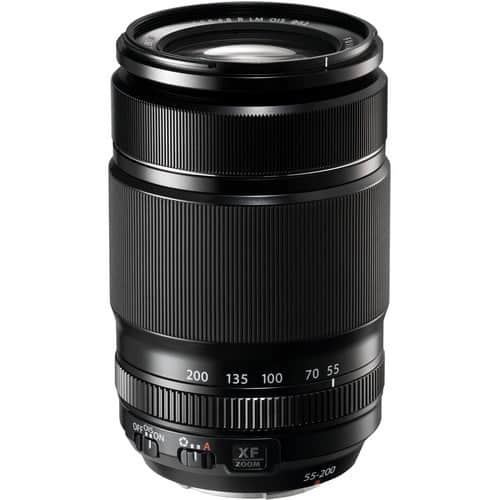
This lens is of tremendous value. Most long lenses are quite expensive and bulky, but for a reasonable price, Fuji delivers a sharp long lens that is fairly compact. As a plus, the stabilization in the lens is truly impressive.
Shop For Fuji XF 55-200
Sony FE 70-200mm f/2.8

Sony had to compete with Canon’s classic 70-200mm lens that photographers have long loved. With this lens, they effectively delivered a razor-sharp lens with image stabilization and quick autofocus.
Shop for Sony 70-200 F2.8
Tamron 150 – 600 G2

The perfect zoom lens will make all the difference regarding wildlife and safari. An excellent focal length for a safari lens should come at 200mm. That’s why Tamron’s 150-600 is a slam dunk. For the price, it’s tough to beat this safari lens.
It has a fantastic feel in your hands and the build quality – albeit a bit heavy. The lens is sharp throughout and only sees a slight softening at 600mm, but it’s 600mm, so who cares. You can snap a photo of a lion’s eye at that focal length.
A similar focal length lens from Canon or Nikon will cost several times more, some even $15,000. The value of this lens is unreal, and they produce it for both Canon and Nikon shooters.
Shop For Tamron 150-600
Canon 70-200mm

This is the second most popular lens Canon has ever made. The Canon EF 70-200mm is an amazing telephoto zoom loved for its image. There are many models, but I recommend looking for more recent additions with image stabilization. Every working professional has carried this lens at some point or still packs it in their bag.
Shop For Canon 70-200 MM
Safari Camera Gear Accessories
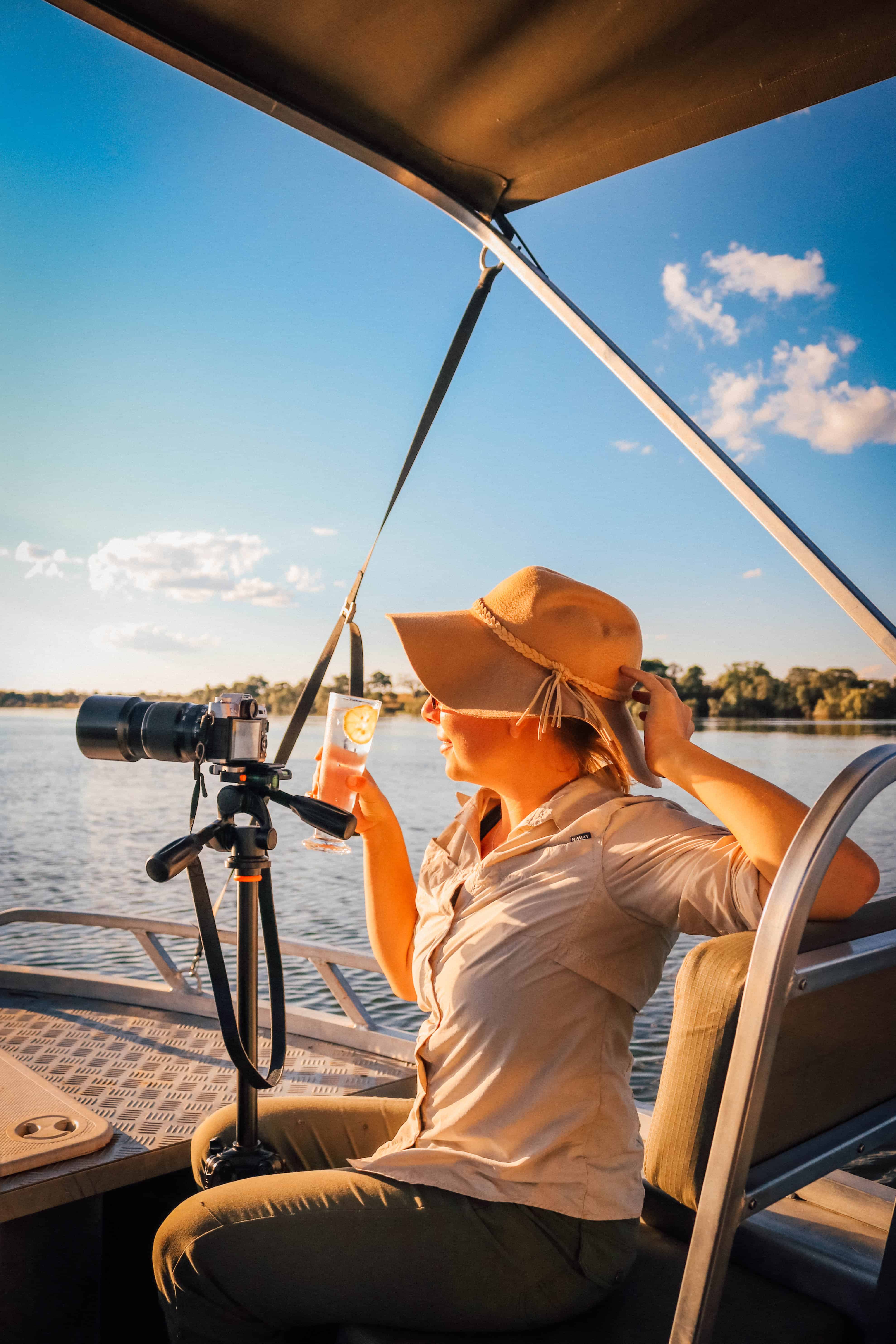
There are several camera accessories that we recommend you carry for your safari. None of these are must-haves, but they’ll help you produce better results.
Travel Tripod

This is one of the best tools you can pack in your bag. A travel tripod is essential for getting a stable shot with a long lens and can allow you to capture compelling images with long exposures.
I can’t recommend a tripod enough if you’re interested in landscape photography. Our favorite safari photos wouldn’t have been possible without this camera gear. Our favorite travel tripod is the Peak Design carbon tripod, which is lightweight yet stable.
Shop for Peak Design Tripod
Lens Filters
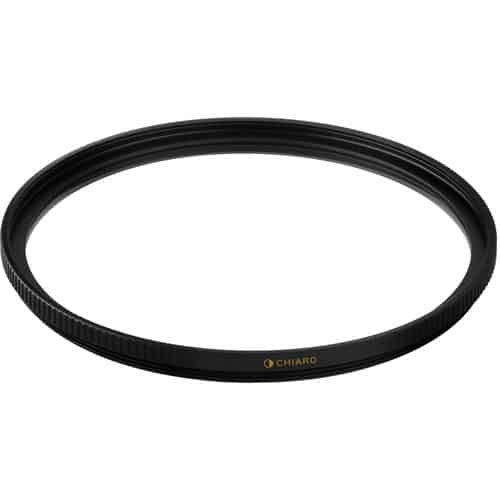
If you’re investing in some nice safari camera gear, I’d suggest picking up a lens filter set. At the very least, you should place a UV filter on your lens. A UV filter is a clear piece of glass designed to protect your lens, ensuring that dust doesn’t cause a permanent scratch on your lens.
You can replace a filter much more easily than a lens. This is particularly important for the zoom lens since the magnification will make lens imperfections more noticeable. To get the right size, look at the thread size on your camera lens. If you’re having a tough time, try reaching out to support or shoot Cameron an email.
Shop For Lens Filters
Peak Design Everyday Backpack

This excellent daypack and backpack work well for travel and everyday life. We love the gear we have from Peak Design, and it’s all exceptionally high quality. Their Everyday Backpack provides accessibility, organization, and quality we’ve seen in no other backpack. What makes it stand out is the backpack feels ready to take on everyday life in addition to your photography needs.
Shop For The Peak Design Everyday Bag
Drones in Africa

If you’ve seen much of our blog or followed us for a while, you’ll know we made a series of videos with a drone throughout Africa. I’ve flown in every country in Southern and East Africa. There are a couple of things to take note of! First, you should know that drones in National Parks are a big no-no.
That said, I have flown a handful of times with the permission of a park ranger in our presence, and most of my flights were back in 2016 as well. This was well before the prevalence of drones.
If you plan to fly on your safari, ask your guide or lodge manager first. Private reserves are more lenient (except Selous) than the National Park Systems. Also, keep in mind that the drone stresses a lot of animals out, particularly elephants.
DJI Mavic

This compact drone from DJI is by far the most compact. We got super excited when we saw the release and now carry it with us on our travels. It fits in the palm of your hand and takes up minimal space.
The drone can fly up to 43mph, and its films are in 4K. I also love the camera’s wide range of flight modes, such as programmed flight paths and following features. It’s incredible how fast DJI has progressed in the drone market. You can not beat the size and convenience of this drone!
Shop For Drones
My Safari Camera Setup

This is the camera setup that I now carry on safari. The photo above was in Mana Pools National Park, one of our favorites!
- Canon 90D: For wildlife shots. I love the durability, video, and cropped APS-C sensor.
- Fuji X-T5: Amazing for image quality and landscapes. Fujifilm cameras have the best color rendition on the market.
- Canon 24 -105 L Lens: This is possibly the greatest lens ever made and is beloved by photographers for its versatility.
- Tamron 150 – 600 G2: Amazing Long Lens
- Canon 16 – 35mm: Fantastic Wide Angle
- Mavic Air: We’ve had the Mavic Pro and Phantom, but the size of the Mavic Air is amazing!
- Tripod: Every serious photographer carries a tripod for stable shots and long exposures.
- Joby: I love this bendable and lightweight tripod.
- GoPro: Not any use on a traditional safari, but always fun on the beaches of Zanzibar!
Basics Of A Safari Camera

Several criteria make an excellent camera for a safari. A lot also depends on the camera’s intended use. Not everyone is in it for the photos, and not everyone wants the same photos. There is no clear-cut answer here for the best camera for safari, but there is the best camera for a specific person.
Cost

This one is an obvious criterion. Not everyone has the budget to spend thousands of dollars on a camera, nor should they. There is no point in spending lots of money on a camera to collect dust or confound the user.
There is also that best bang for buck aspect. While a high-end professional camera costs a lot, the high prices often make it pointless for anyone but a professional. Even some professionals see the additional cost as a waste!
FPS (Frames per second)

This is an essential aspect for many. It refers to how quickly a camera can shoot a burst of photos. With fast-moving subjects on safari, you’ll want to capture that perfect moment. This may require a burst and a fast fps.
This refers to how many photos the camera can take in one second. This is not the most crucial aspect to consider when comparing similar cameras.
Sensor

The sensor refers to the light-sensitive chip in every digital camera that interprets how light is perceived to create a digital image. Sensors come in a variety of shapes and sizes and have the most direct impact on image quality. When it comes to wildlife photography, every inch counts.
All lenses are measured mathematically for a full-frame sensor – the same size as a 35mm film camera. So, cameras employing a smaller sensor have a cropped effect on lens focal length. This means 100mm on a Canon 90D is the focal length of a 160mm lens.
Lens
The lens is the most important aspect when shooting wildlife photography. You can have the best camera money can buy, but if you have a wide-angle lens, you aren’t going to get those stellar close-up wildlife shots. Many cameras opt for interchangeable lenses, allowing a wide range of focal lengths to get wide landscape shots and tight close-ups. When shooting wildlife, the far-reaching lens or zoom is essential.
Lens distance is referred to as focal length. The focal length is measured in millimeters, with a short focal length (25mm) creating a wide-angle image and a long focal length (135mm) creating a tight/zoomed image.
The two images above were taken from the same distance.
Build
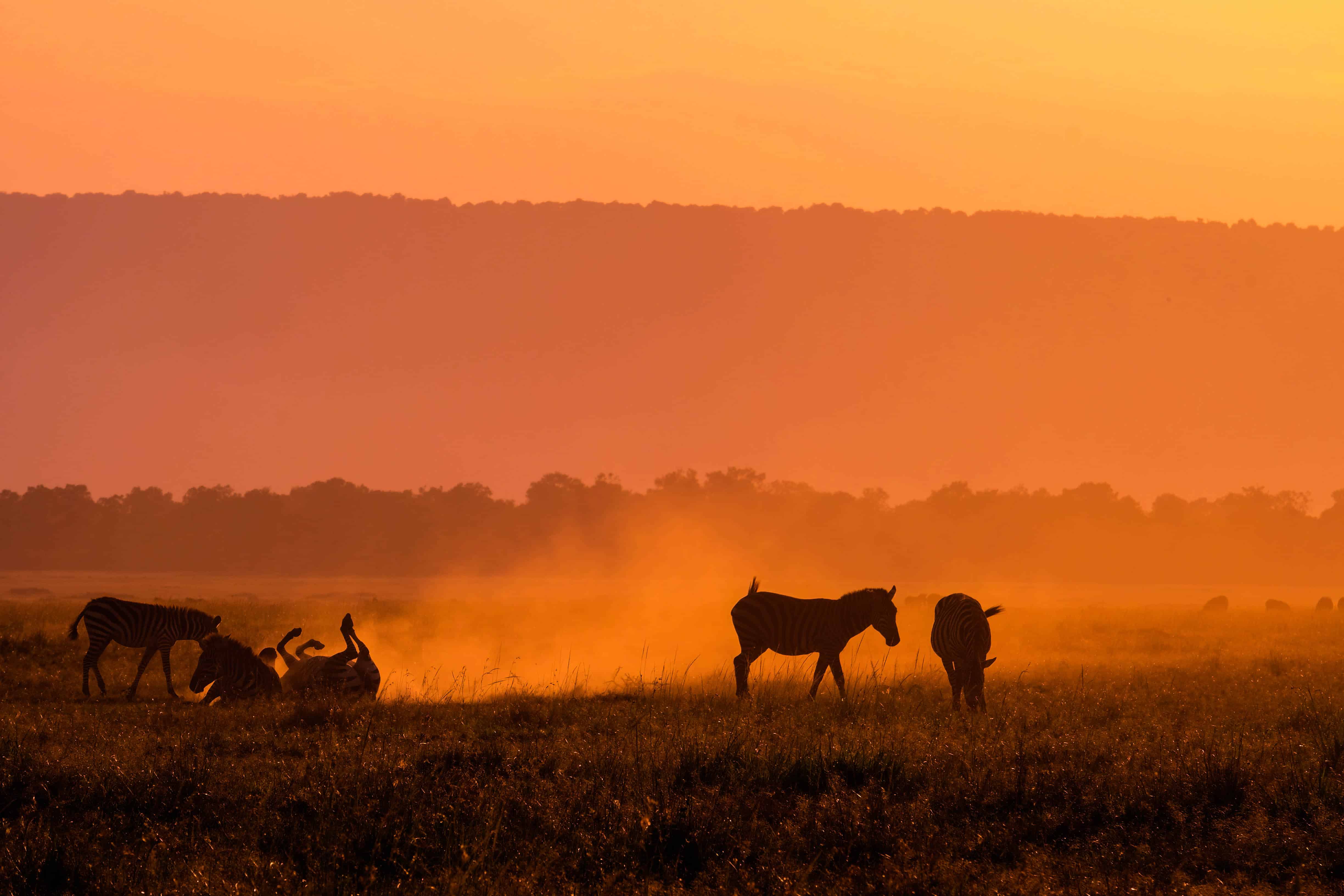
The African bush can be brutal on just about everything. Safari lodges and vehicles constantly fight the elements of dust, dirt, humidity, heat, wind, rain, and even wild animals. Although it’s unlikely your camera will have to survive an elephant, the environment should be considered.
Professional cameras are built to be weatherproof, meaning they can handle dust, dirt, and rain directly on the camera. I’ve carried my Canon camera through rainstorms without fear of being ruined. Several cameras are purpose-built to hold up to the elements.
Comfort

How does the camera feel in your hands? Are you going to drop it? Is it heavy? Or does it feel like an extension of your arms and eyes? A camera with a solid grip is a lifesaver when shooting photos while walking in the bush, from a moving boat, or the game viewer.
Where to Buy Your Camera for Safari?

We shop for almost all of our photography needs on B&H Photo. They’re the best camera shop in America and have worked with professional film, video, and photography needs for decades.
They’re responsible for handling the equipment of major feature films, Pulitzer Prize photographers, and everyday consumers like ourselves. Their support is tremendous and knowledgeable. On top of all that, they offer free two-shipping, so forget about ordering camera gear on Amazon!

Plan Your Trip to Africa
- Travel Insurance: We don’t travel without travel insurance and neither should you. You never know what can happen while traveling so it’s best to be prepared. HeyMondo provides excellent short-term and long-term travel insurance plans.
- Travel Waterbottle: When we’re uncertain about the water supply we use our Grayl Purifier. It’s come in exceptionally handy around Africa.
- Camera Gear: Chances are you’ll want a camera for your trip to Africa. We love the Sony RX100V for a pocket-size camera and the Fujifilm XT-4 for a professional camera. Check out our favorite cameras for Africa.
- Safari Clothes: Lightweight, beige, and moisture-wicking clothing are great for traveling Africa. See our favorite safari clothing here.
- Safari Hat: A good hat is both stylish and functional.
- Safari Bag: A durable bag is ideal for traveling around Africa.
- Safari Pants: We recommend neutral-colored pants as they’re great at hiding dirt and can match most shirt colors.
- Safari Shirt: Shirts like these are lightweight and keep the bugs away!
- Boots: While you don’t need to wear sturdy shoes every day, at least one pair of safari boots will make your trip nicer!
- Travel Adapter: You’ll need a special travel adapter for traveling to Africa. Get one before you get there so you don’t pay a premium on the ground.


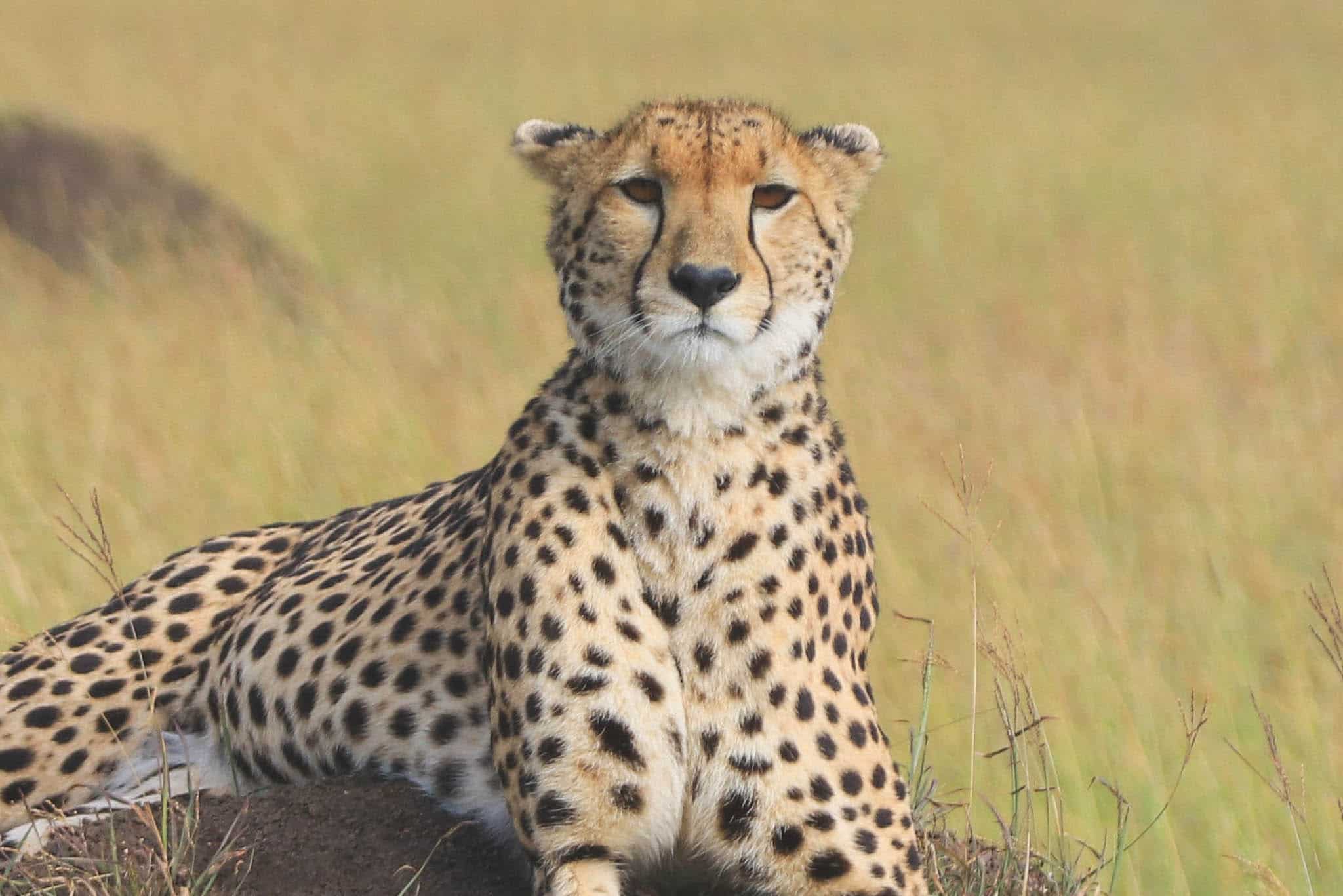

Love your website and how everything is so well organized and detailed. Thank you.
Hi there Cameron and thanks for this great post.
I’m thinking about the Sony Cyber‑Shot RX10 IV which you recommend for those looking for a bridge camera for safari. I have an older Nikon SLR with some heavy lenses but want something lighter for an upcoming trip that will include time in Ethiopia and Kenya.
Just wondering your thoughts on going from a digital SLR to a bridge camera? Any tips for using a bridge camera for safari and wildlife shooting?
Thanks in advance
-Steve Brodsky